Inbox and Environment News: Issue 395
March 3 - 9, 2019: Issue 395
Clean Up Australia Day 2019
Business Clean Up Day – Tuesday 26 February 2019
Youth and Schools Clean Up Day – Friday 1 March 2019
Clean Up Australia Day – Sunday 3 March 2019
Business Clean Up Day – Tuesday 26 February 2019
Youth and Schools Clean Up Day – Friday 1 March 2019
Clean Up Australia Day – Sunday 3 March 2019
Local Clean Ups - By Postcode
2108
Coasters Retreat, Pittwater
Sunday 03rd March 15:00
Meeting Point: Fire brigade fire shed
Site Supervisor: Wilma TaylorKiddies Corner, Palm Beach
Sunday 03rd March 09:00
Meeting Point: On the beach, southern end of Palm Beach off beach road.
Site Supervisor: Carmen Bolton
2107
William Street, Avalon Beach
Sunday 03rd March 08:30 - 11:30
Meeting Point: Eastern end of William St, near track through mangroves.
Site Supervisor: Julie Bennett
2106
Newport beach
Sunday 03rd March 10:30 - 12:00
Meeting Point: Bert Payne Park bear the surf club
Site Supervisor: Matt James
2105
Elvina Bay, Pittwater
Saturday 02nd March 12:00
Meeting Point: Elvina Park
Site Supervisor: Melinda Broughton
Fitzpatrick Avenue, Scotland Island
Sunday 03rd March 09:00 - 13:00
Meeting Point: Cargo Wharf
Site Supervisor: Cass Gye
Lowanna Street, Scotland Island
Sunday 03rd March 09:00 - 13:00
Meeting Point: Eastern Wharf
Site Supervisor: Cass Gye
Harold Avenue, Scotland Island
Sunday 03rd March 09:00 - 13:00
Meeting Point: Carols Wharf
Site Supervisor: Cass Gye
Vivian Street, Scotland Island
Sunday 03rd March 09:00 - 13:00
Meeting Point: Bell Wharf
Site Supervisor: Cass Gye
Elizabeth Park, Scotland Island
Sunday 03rd March 09:00 - 13:00
Meeting Point: Cargo Wharf
Site Supervisor: Cass Gye
Pitt View Street, Scotland Island
Sunday 03rd March 09:00 - 13:00
Meeting Point: Tennis Wharf
Site Supervisor: Cass Gye
Pittwater Road, Church Point
Sunday 03rd March 09:00 - 13:00
Meeting Point: Church Point Ferry Wharf
Site Supervisor: Cass Gye
Bayview Scout Hall and surrounds
Sunday 03rd March 09:00 - 11:00
Meeting Point: Bayview Scout Hall - come inside, sign up and collect a bag and gloves.
Site Supervisor: Jenny Hermann
2103
Mona Vale Beach, Mona Vale
Sunday 03rd March 10:00 - 12:00
Meeting Point: Meet at the northern end of The Basin on the grass area next to beach.
Site Supervisor: Tina Mollema
2102
Warriewood Beach
Sunday 03rd March 09:30 - 10:00
Meeting Point: Meet at the small timber platform next to the power pole, on the beach beside the car park.
Site Supervisor: Bruce Kelly
2101
Sanctuary Island, Wimbledon Avenue, North Narrabeen
Sunday 03rd March 09:00 - 12:00
Meeting Point: Park at end of Wimbledon Avenue
Site Supervisor: Rick Shires
Coasters Retreat, Pittwater
Sunday 03rd March 15:00
Meeting Point: Fire brigade fire shed
Site Supervisor: Wilma Taylor
Kiddies Corner, Palm Beach
Sunday 03rd March 09:00
Meeting Point: On the beach, southern end of Palm Beach off beach road.
Site Supervisor: Carmen Bolton
2107
William Street, Avalon Beach
Sunday 03rd March 08:30 - 11:30
Meeting Point: Eastern end of William St, near track through mangroves.
Site Supervisor: Julie Bennett
2106
Newport beach
Sunday 03rd March 10:30 - 12:00
Meeting Point: Bert Payne Park bear the surf club
Site Supervisor: Matt James
2105
Elvina Bay, Pittwater
Saturday 02nd March 12:00
Meeting Point: Elvina Park
Site Supervisor: Melinda Broughton
Fitzpatrick Avenue, Scotland Island
Sunday 03rd March 09:00 - 13:00
Meeting Point: Cargo Wharf
Site Supervisor: Cass Gye
Lowanna Street, Scotland Island
Sunday 03rd March 09:00 - 13:00
Meeting Point: Eastern Wharf
Site Supervisor: Cass Gye
Harold Avenue, Scotland Island
Sunday 03rd March 09:00 - 13:00
Meeting Point: Carols Wharf
Site Supervisor: Cass Gye
Vivian Street, Scotland Island
Sunday 03rd March 09:00 - 13:00
Meeting Point: Bell Wharf
Site Supervisor: Cass Gye
Elizabeth Park, Scotland Island
Sunday 03rd March 09:00 - 13:00
Meeting Point: Cargo Wharf
Site Supervisor: Cass Gye
Pitt View Street, Scotland Island
Sunday 03rd March 09:00 - 13:00
Meeting Point: Tennis Wharf
Site Supervisor: Cass Gye
Pittwater Road, Church Point
Sunday 03rd March 09:00 - 13:00
Meeting Point: Church Point Ferry Wharf
Site Supervisor: Cass Gye
Bayview Scout Hall and surrounds
Sunday 03rd March 09:00 - 11:00
Meeting Point: Bayview Scout Hall - come inside, sign up and collect a bag and gloves.
Site Supervisor: Jenny Hermann
2103
Mona Vale Beach, Mona Vale
Sunday 03rd March 10:00 - 12:00
Meeting Point: Meet at the northern end of The Basin on the grass area next to beach.
Site Supervisor: Tina Mollema
2102
Warriewood Beach
Sunday 03rd March 09:30 - 10:00
Meeting Point: Meet at the small timber platform next to the power pole, on the beach beside the car park.
Site Supervisor: Bruce Kelly
2101
Sanctuary Island, Wimbledon Avenue, North Narrabeen
Sunday 03rd March 09:00 - 12:00
Meeting Point: Park at end of Wimbledon Avenue
Site Supervisor: Rick Shires
Waterbirds Of The Northern Beaches Talk
Saturday, 9 March 2019 - 2:00pm to 4:00pmA presentation by Russell Beardmore, local bird expert, of the waterbirds to be found in the Northern Beaches followed by afternoon tea.
Pricing: FREE - no bookings requiredLocationStony Range Regional Botanic Garden810 Pittwater RdDee Why NSW
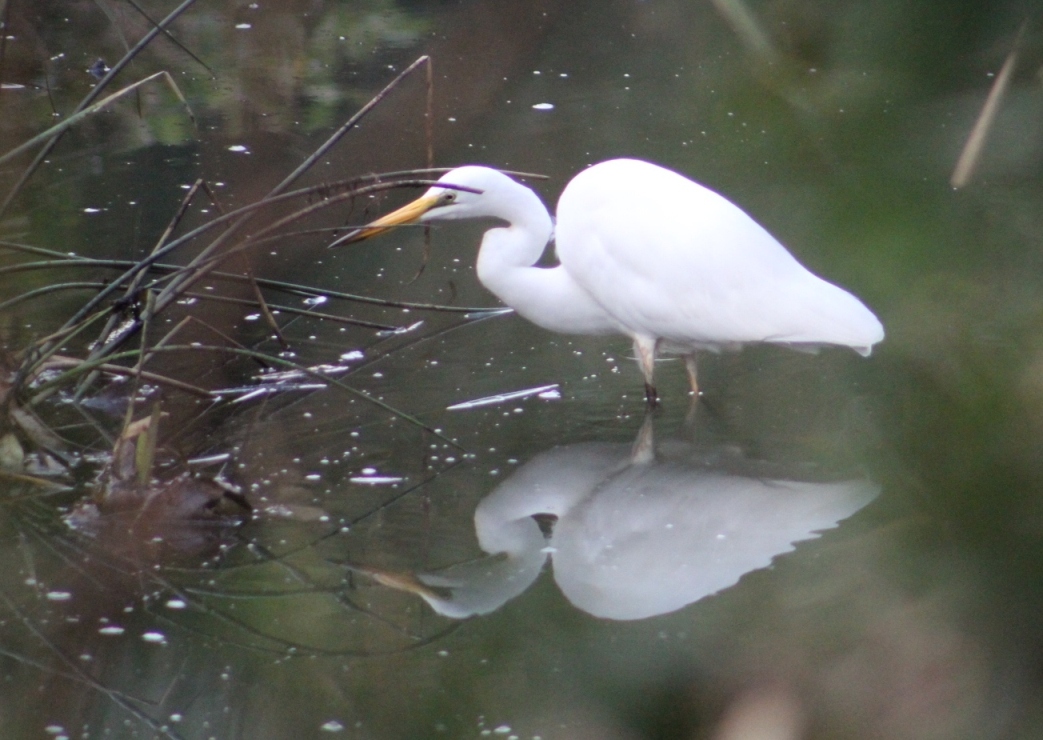

A Survey On Ticks And Wildlife In The Northern Beaches
The University of Sydney is conducting a study to better understand how residents and their pets are encountering ticks and wildlife in their backyards. We invite all Northern Beaches residents to participate in our survey.
Coastal bushland remnants and other green spaces across the Northern Beaches are home to a variety of native plants and animals. They also provide a place for residents to enjoy their favourite outdoor pastimes. Paralysis ticks (Ixodes holocyclus) are common in the Northern Beaches and feed on a wide range of animal hosts during their life cycle. Understanding the complex relationship between ticks and their host species is an essential part of our research. The information we gain will contribute to our growing knowledge of ticks and will guide future research efforts.
We aim to identify:- Areas where people are encountering ticks more than others (tick 'hotspots'),
- Backyard and landscape features that may influence tick presence, and
- Wildlife using backyards and how this might or might not influence tick occurrence
To meet these aims, it is important for you to provide a street address. If you would prefer not to, we ask that you provide your street name and nearest cross street. It is important for us to create a map of tick encounters to understand what landscape features might influence tick presence and where to target future research.
All identifying information will be removed from any data presentations.
The survey should only take approximately 10 minutes to complete and is voluntary.
If you have any questions about the project, please contact PhD candidate Casey Taylor on 02 9351 3189 or casey.taylor@sydney.edu.au. This project is being undertaken by the University of Sydney in association with Northern Beaches Council.
Your participation is greatly appreciated.
This research has been approved by the University of Sydney Human Ethics committee. (Approval no: 2018/157)
- Areas where people are encountering ticks more than others (tick 'hotspots'),
- Backyard and landscape features that may influence tick presence, and
- Wildlife using backyards and how this might or might not influence tick occurrence
Avalon Boomerang Bags 2019
WORKSHOPS are held Tuesdays during the school termat the Avalon Recreation Centre 11.30 - 3.30pm
Everyone is welcome; come for an hour or come for all 4, we'll even provide a cuppa and guaranteed laughs. Non-sewers also very useful.
Pop in with your excess fabric donations or spare enviro bag donations. We also sell our very handy Boomerang Bag coffee cups, stainless steel drink bottles and other enviro products and of course, our "Bought to Support" bags.
NSW Marine Estate Update
February 28, 2019
The Marine Estate Management Strategy 2018-2028, a statewide Strategy, outlines how we can achieve our vision for a healthy coast and sea, managed for the greatest wellbeing of the community, now and into the future.
Implementation of the NSW Government’s Marine Estate Management Strategy is well underway. The Strategy coordinates and streamlines the management of the State’s entire coastline – 1,750 km – including 826 beaches and 185 estuaries. Developed with input from key stakeholders and the community, it outlines how we will care for our marine estate and the range of community benefits it provides over the next ten years. The Strategy will be delivered through 53 actions under nine initiatives.
Over $45.7 million will be spent during the first two years. Since August 2018 staff have been working closely with industries, key stakeholders, and partner government agencies involved in the delivery of actions, to plan their projects. A range of innovative projects are now underway that will help to:
- reduce water pollution and marine litter
- improve marine and coastal habitats
- protect Aboriginal cultural values
- reduce impacts on marine wildlife
- enhance the social, cultural and economic benefits that everyone derives from the marine estate.
RISK-BASED FRAMEWORK FOR WATERWAY HEALTH OUTCOMES
The NSW Office of Environment and Heritage (OEH) is supporting local governments throughout NSW, to help deliver positive waterway health outcomes using a riskbased approach. The Risk-based Framework for Considering Waterway Health Outcomes in Strategic Land-use Planning Decisions provides a structured approach for decision-makers to help manage the impact of land-use activities on the health of our waterways.
OEH is working with local government to assist them to apply the framework and to strengthen requirements for protecting water quality and waterway health under their local planning instruments. This includes Local Strategic Planning Statements and the ‘LEP Health Check’. The framework will also be used to identify the barriers to improving stormwater management, such as cost-effective delivery of infrastructure.
OEH is also supporting the wider application of the framework by providing data and preparing tools, guidance and practice notes. OEH will be contacting councils in the coming weeks to ensure that these materials and guidelines are developed to meet local needs and expectations.
A key outcome will be a refresh of the NSW Water Quality and River Flow Objectives, which underpin the NSW Government’s policy on water quality.
February 28, 2019
The Marine Estate Management Strategy 2018-2028, a statewide Strategy, outlines how we can achieve our vision for a healthy coast and sea, managed for the greatest wellbeing of the community, now and into the future.
Implementation of the NSW Government’s Marine Estate Management Strategy is well underway. The Strategy coordinates and streamlines the management of the State’s entire coastline – 1,750 km – including 826 beaches and 185 estuaries. Developed with input from key stakeholders and the community, it outlines how we will care for our marine estate and the range of community benefits it provides over the next ten years. The Strategy will be delivered through 53 actions under nine initiatives.
Over $45.7 million will be spent during the first two years. Since August 2018 staff have been working closely with industries, key stakeholders, and partner government agencies involved in the delivery of actions, to plan their projects. A range of innovative projects are now underway that will help to:
- reduce water pollution and marine litter
- improve marine and coastal habitats
- protect Aboriginal cultural values
- reduce impacts on marine wildlife
- enhance the social, cultural and economic benefits that everyone derives from the marine estate.
RISK-BASED FRAMEWORK FOR WATERWAY HEALTH OUTCOMES
The NSW Office of Environment and Heritage (OEH) is supporting local governments throughout NSW, to help deliver positive waterway health outcomes using a riskbased approach. The Risk-based Framework for Considering Waterway Health Outcomes in Strategic Land-use Planning Decisions provides a structured approach for decision-makers to help manage the impact of land-use activities on the health of our waterways.
OEH is working with local government to assist them to apply the framework and to strengthen requirements for protecting water quality and waterway health under their local planning instruments. This includes Local Strategic Planning Statements and the ‘LEP Health Check’. The framework will also be used to identify the barriers to improving stormwater management, such as cost-effective delivery of infrastructure.
OEH is also supporting the wider application of the framework by providing data and preparing tools, guidance and practice notes. OEH will be contacting councils in the coming weeks to ensure that these materials and guidelines are developed to meet local needs and expectations.
A key outcome will be a refresh of the NSW Water Quality and River Flow Objectives, which underpin the NSW Government’s policy on water quality.
Polar Law Symposium Call For Presentations
February 28, 2019: Institute for Marine and Antarctic Studies, University of TasmaniaThe 12th Polar Law Symposium, to be held at IMAS in Hobart this December, is now calling for presentations.
This will be the second time the event has been held in Tasmania, following the successful 7th Symposium held in 2014.
Academics, students and legal practitioners from around the world are expected to attend the symposium, with a wide range of topics for discussion to include: developments in polar law, polar marine resources, climate law, the Antarctic Treaty system, and Asian interests in polar affairs.
IMAS Senior Lecturer Dr Julia Jabour is helping to organise the Symposium in collaboration with the Polar Law Institute (University of Akureyri, Iceland), the Northern Institute for Environmental and Minority Law – Arctic Centre (University of Lapland, Finland), and the University of the Arctic and its Arctic Law Thematic Network(Finland).
Dr Jabour said the Polar Law Symposium is rich with case material from the Arctic and Antarctic that has universal application, particularly for Australia as the Antarctic is a polar region located in our neighbourhood and is a high political responsibility.
“Polar law and policy are becoming increasingly significant as more countries build their research presence in and around the Antarctic to understand climate change, and there's increasing global pressure to access resources like fisheries and minerals in areas like the Poles,” Dr Jabour said.
“To be held from 1 to 4 December, the 2019 event will be just the second time the symposium has been held outside the Northern Hemisphere, both times at IMAS.
“It promotes a healthy exchange of information and ideas, along with valuable networking experiences for a diverse group of people who have few opportunities to meet in person.”
Potential contributors are invited to submit abstracts for oral presentations on one of the nominated symposium themes or a topic of their own choice via the Symposium website.
Indigenous Knowledge Key To A Successful Ecosystem Restoration
February 26, 2019: Universitat Autonoma de BarcelonaEcological restoration projects actively involving indigenous peoples and local communities are more successful. This is the result of a study carried out by the Institute of Environmental Science and Technology at the Universitat Autònoma de Barcelona (ICTA-UAB), which places value on indigenous and local knowledge contribution in the restoring of degraded ecosystems, and highlights the need to engage them in these projects for ensuring a long-term maintenance of restored areas.
Indigenous peoples and local communities are affected by global environmental change because they directly rely on their immediate environment to meet basic livelihood needs. Therefore, safeguarding and restoring ecosystem resilience is critical to ensuring their food and health sovereignty and overall well-being. Their vested interest in restoring ecosystems from which they directly benefit and their intimate knowledge of their lands, resources and the dynamics affecting them, position them as key elements in the attainment of the ecological restoration projects goals.
However, the contributions of indigenous peoples and local communities continue to be largely absent in international environmental policy fora, in which biological importance and restoration feasibility are prioritised over local concern.
The study, led by ICREA researcher at ICTA-UAB Victoria Reyes-García, reviews hundreds of instances in which, through traditional practices, indigenous peoples have contributed to managing, adapting and restoring the land, sometimes creating new types of highly biodiverse ecosystems. "There are many examples in which indigenous peoples have taken leadership roles in restoring forests, lakes and rivers, grasslands and drylands, mangroves and reefs, and wetlands degraded by outsiders or climate change, successfully coupling the goals of restoration and increasing participation of local population," explains Victoria Reyes-García.
Traditional practices include anthropogenic burning purposively altering spatial and temporal aspects of habitat heterogeneity to create diversity, waste deposition practices resulting in soil carbon enrichment, rotational swidden cultivation systems able to maintain forest cover and plant diversity, interplanting useful plants in native forests thereby increasing forest diversity, and scattering species-rich hayseed and cleaning meadows to maintain grassland productivity and resilience.
However, the research stresses that not all restoration initiatives engaging indigenous peoples and local communities have been beneficial or successful. "Some campaigns have not successfully involved local communities or impacted afforestation outcomes given the lack of clarity of the policies designed at the central level or the neglect of local interests," says Reyes-García. She highlights that positive outcomes are normally associated with projects in which local communities have been actively involved in co-designing activities, customary institutions have been recognised, and both short-term direct benefits to local population and long-term support of the maintenance of restored areas have been ensured.
Therefore, Victoria Reyes-García advocates that "in order to meet Aichi Target 15 of the Convention on Biological Diversity on restoring 15% of globally degraded ecosystems there is a need to increase the participation of indigenous peoples and local communities in ecological restoration activities."
Victoria Reyes-García, Álvaro Fernández-Llamazares, Pamela McElwee, Zsolt Molnár, Kinga Öllerer, Sarah J. Wilson, Eduardo S. Brondizio. The contributions of Indigenous Peoples and local communities to ecological restoration. Restoration Ecology, 2019; 27 (1): 3 DOI: 10.1111/rec.12894
Smart Energy Conference & Exhibition 2019
Starts: 8:30am Tuesday, 2 April 2019Ends: 5:30pm Wednesday, 3 April 2019Location: International Convention Centre Sydney14 Darling Drive, Darling Harbour, New South Wales 2000Australia
The Smart Energy Conference and Exhibition is one of Australia’s biggest solar, storage and smart energy conference and exhibition.
Powered by the Smart Energy Council – incorporating the Australian Solar Council and Energy Storage Council, this is our 57th annual FREE-TO-ATTEND conference and exhibition.
TOP REASONS TO ATTEND- Over 6,000 delegates, 120 exhibitors and partners
- A showcase of the latest technology, demonstration of new business models and innovation
- Outstanding knowledge sharing and networking
- 3 Conference and information sessions with over 100 presenters
- CPD points for installers
- Over 6,000 delegates, 120 exhibitors and partners
- A showcase of the latest technology, demonstration of new business models and innovation
- Outstanding knowledge sharing and networking
- 3 Conference and information sessions with over 100 presenters
- CPD points for installers
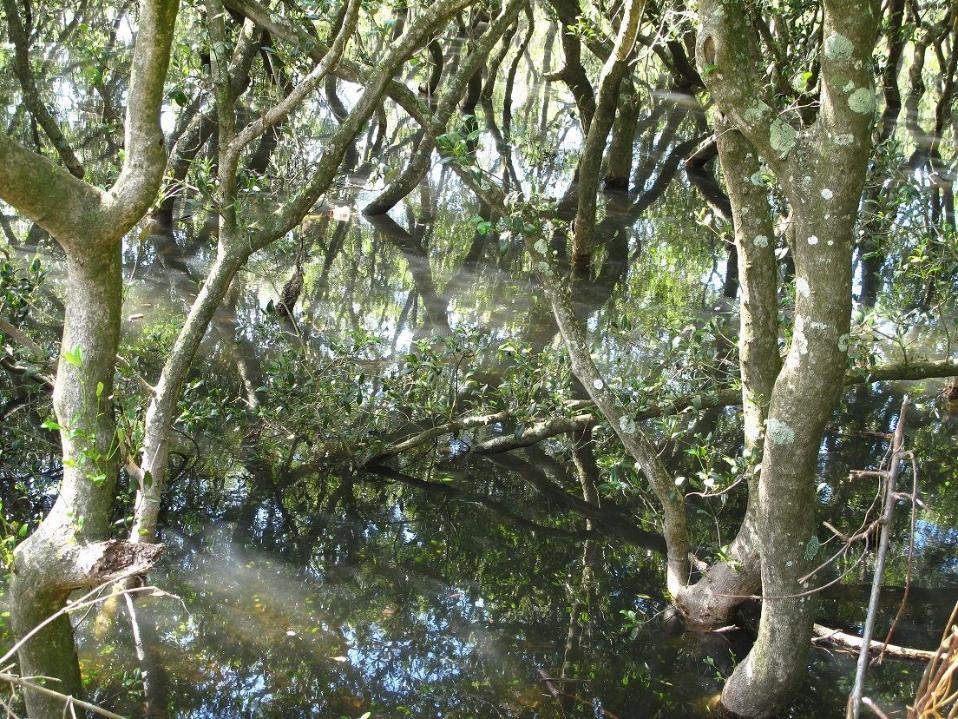 Careel Bay mangrove forest at high tide, rich habitat for fish, crabs and many other invertebrates, and the tiny Mangrove Warbler bird. Grey Mangroves, Avicennia marina, breathe through special roots at low tide, tolerate salt and secrete it on their leaves. Photo by and courtesy PNHA
Careel Bay mangrove forest at high tide, rich habitat for fish, crabs and many other invertebrates, and the tiny Mangrove Warbler bird. Grey Mangroves, Avicennia marina, breathe through special roots at low tide, tolerate salt and secrete it on their leaves. Photo by and courtesy PNHA

PITTWATER YHA OFFERS FREE BEDS FOR GREEN HEARTS
This May, Pittwater YHA opens its doors to green-hearted and green-thumbed guests who'll save the gorgeous Ku-ring-gai Chase National Park from imminent asparagus fern invasion. Yes, seriously.
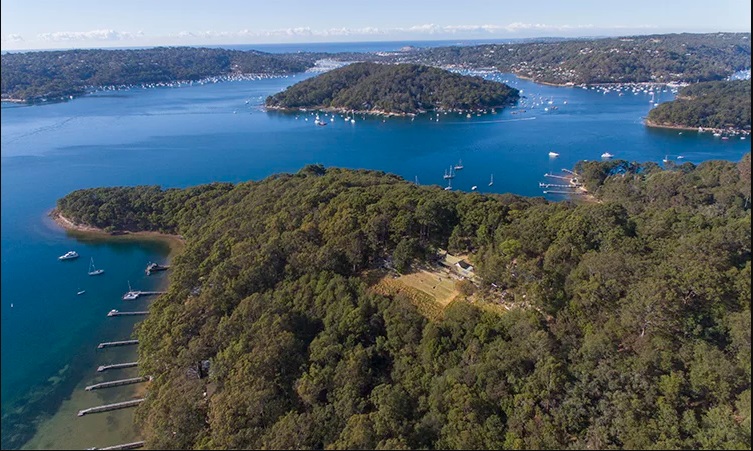
WHAT IS IT?Bush Regeneration sees eco-conscious, kind hearted humans restore and rehabilitate the gorgeous, sprawling Aussie bush from its weed-infested, degraded state into a healthy, thriving plant community, which will prosper and delight forevermore. Far from just weed removal; Regenerators focus on habitat, drainage, weed sources and establishing native communities. These are big words which probably don’t make much sense – but we have an interactive learning opportunity for you!
WHERE IS IT?Ku-ring-gai Chase National Park, Sydney’s protected north coast, is home to rock engravings, red ochre rock paintings, the fuzziest wildlife you ever did see and the most breathtaking views a Sydneysider or visitor could comprehend; and is currently under threat from invasive asparagus fern; which needs removing. Who knew your Aunty’s fave veggie could be so aggressive?
ALRIGHT - SIGN ME UP!The blissed-out, babbling-brooked, spectacular-viewed, fresh-aired oasis that is our Pittwater YHA, alongside the Northern Beaches Council, are offering you fine green-thumbed and hearted folk the opportunity to volunteer alongside professional Regenerators for a weekend of Pittwater Restoration from May 3 - 5, 2019. Spend two mornings of tending to the gorgeous surrounds and you’ll be rewarded with two nights’ accommodation, two days of meals (morning teas, BBQ lunches and evening dinners) and kayak use throughout your stay. Plus, you’ll be chuffed with yourself for doing your bit for the planet and our futures.
Along with your towels, two sheets, a pillowcase and, sturdy shoes, sunscreen and your breakfasts; you’ll need a $20 contribution for the weekend. For all the T&Cs; head to Pittwater YHA, shoot them an email (Subject: 'Bush Regeneration Weekend') or give them a ring on (02 9999-5748) – the only thing those guys love more than a regenerated bushland is chatting to ladies and gentleman who are keen on the idea!

Antarctic Researcher's Rare View Of An Ice Shelf Calving
February 2019Antarctic researchers from the University of Tasmania this month enjoyed a front row seat as a segment of the Sørsdal Glacier ice shelf - six kilometres long and up to a kilometre wide - broke off into the Southern Ocean.
Known as calving, the event was monitored by researchers from the Australian Research Council funded Antarctic Gateway Partnership (AGP), who were in the East Antarctic area for test deployments of the University’s world-leading polar Autonomous Underwater Vehicle (AUV), built by International Submarine Engineering and named nupiri muka.
nupiri muka had explored underneath the ice shelf before the calving, which was a first for Australian Antarctic research.
AGP marine glaciologist Dr David Gwyther, who witnessed the event, said the observation of the calving was significant for research into the impact of Antarctic ice mass loss on sea-level rise.
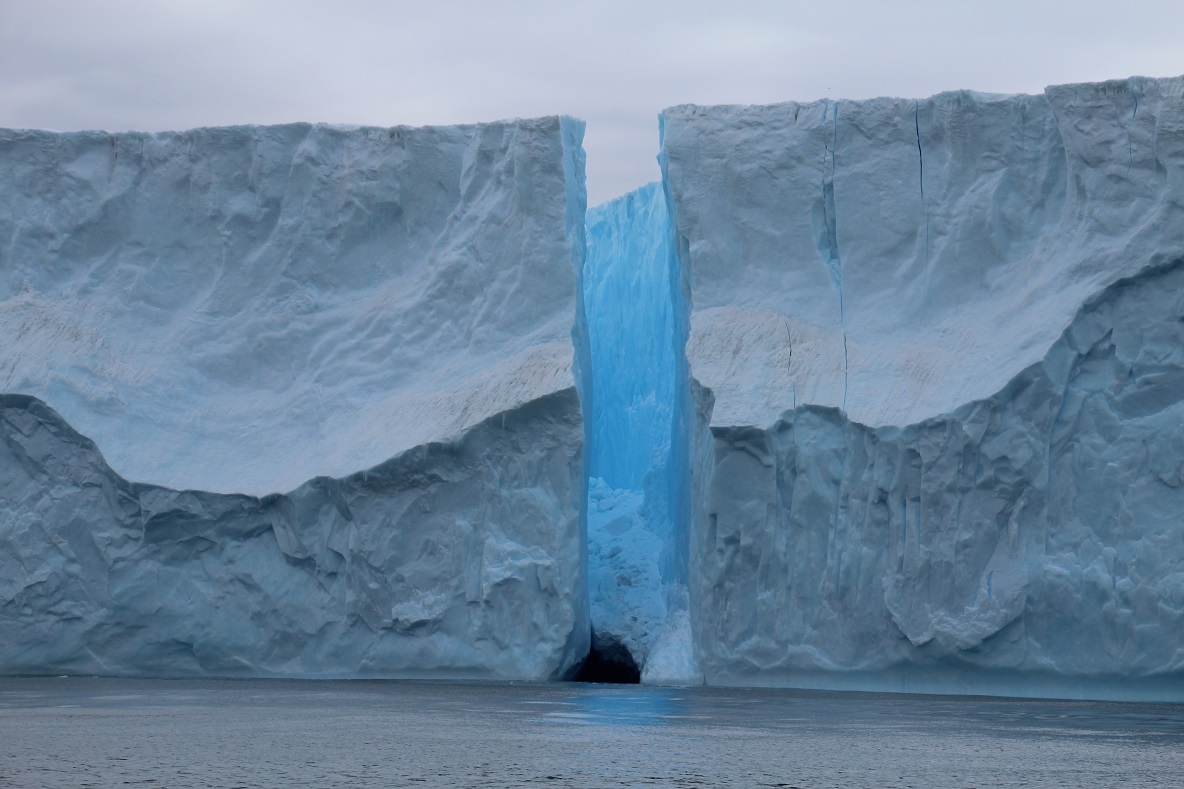
Image: the widening crack on the southern edge of the glacier as it calves. Credit: David Gwyther
“This event was unique because we were able to use the AUV to map the under-ice environment before the calving event,” Dr Gwyther said.
“We were also able to extensively document the ice shelf region pre- and post-calving with both aerial and on-water photography, and to correlate the images with satellite imagery.
“While this particular event was not large compared to other recent ice shelf calving in West Antarctica, the detailed observations we’ve collected on this calving event will help us to better understand future changes to ice shelves.“Ice shelf calving itself is a natural phenomenon, however the frequency of these events is predicted to increase with climate change.
“As such, this event will provide an invaluable baseline against which we can assess future changes,” Dr Gwyther said.
Back in Hobart, IMAS PhD student Eleri Evans had been using satellite images to monitor a trough at the tip of the Sørsdal Glacier ice shelf since December last year as it appeared a likely site for a calving event.
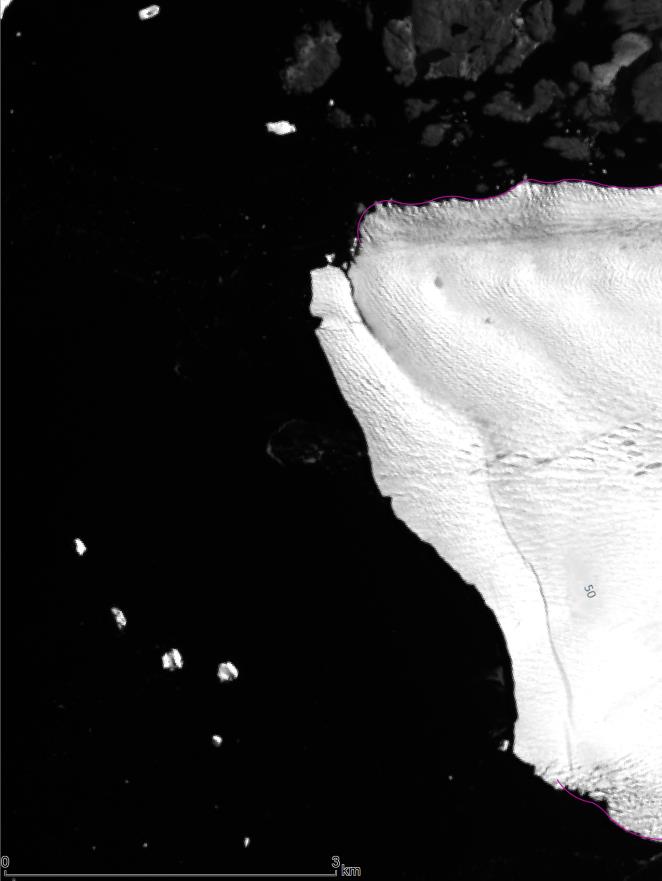
Landsat satellite image, shows a crack parallel with the left edge of the ice shelf prior to calving. Credit: Eleri Evans
“The data from the photographic images taken at the site will be critical to improving our understanding of how the Sørsdal Glacier produces icebergs,” Ms Evans said.
“It’s uncommon for this level of observation to be made of an Antarctic calving event.
“In Greenland, videos of calving are commonplace because the mechanisms are different and icebergs may break off multiple times a day from the outlet glaciers there.
“But in Antarctica different mechanisms are involved, reducing the production of the larger tabular-style icebergs, and the remoteness of these ice shelves means there are very few cases where this level of observation has been possible.
“It was just perfect timing that the researchers were there to capture the lead up to the calving event as well as its aftermath,” Ms Evans said.
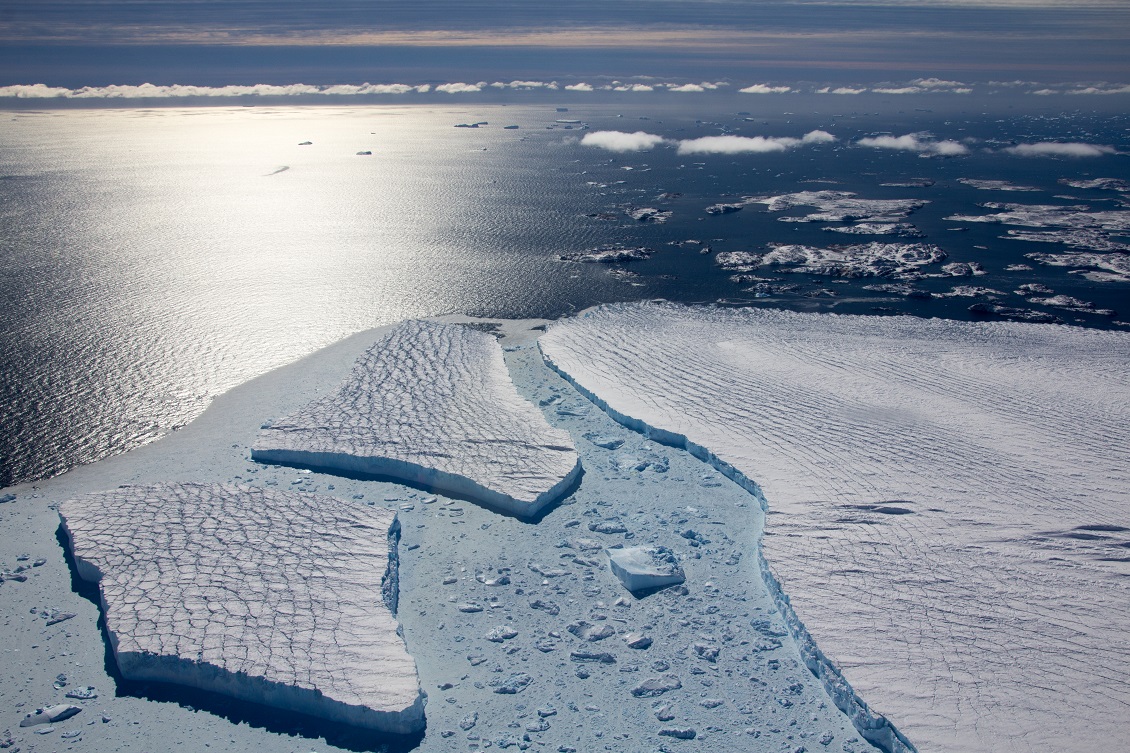
Image: flat topped icebergs created by the calving. Credit: David Gwyther.
Associate Professor Guy Williams from the Australian Maritime College’s Autonomous Maritime Systems Laboratory said the AUV had been deployed to the Sørsdal Glacier to develop its under-ice capability for future scientific missions to larger, globally significant ice shelves.
“The ease of access of the Sørsdal from the Australian Antarctic Division’s Davis research station provided a valuable test bed for nupiri muka’s first polar missions, in particular its first time beneath an ice shelf.
“nupiri muka collects a range of data that allows scientists to map the seafloor and under-ice topography while at the same time recording water temperature, salinity and currents, exploring the oceanography driving ice sheet change.
“This campaign has successfully demonstrated the unique capabilities that nupiri muka provides and provided an important proving ground for the methodologies that will drive many years of future scientific AUV exploration,” Associate Professor Williams said.
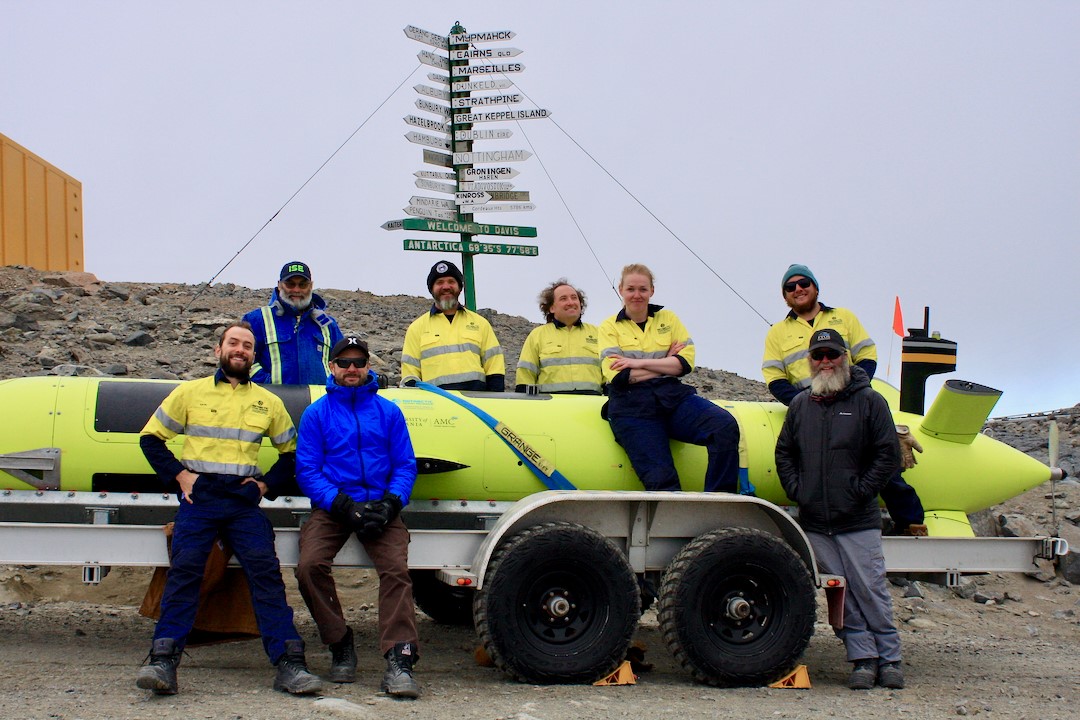
The AUV team at Davis research station.




New Clue In Jade Iceberg Mystery
February 27, 2918: Australian Antarctic DivisionAntarctic researchers have a new hypothesis that could solve the century-old mystery of why some icebergs are green.
Icebergs are normally white or blue, but sailors and explorers to Antarctica since the early 1900s have reported sightings of lustrous jade and emerald green icebergs in parts of the Southern Ocean.
Tests on ice samples collected from underneath the Amery Ice Shelf suggest that iron oxides in seawater are the likely the explanation for these rare, frozen curiosities.
The research, led by Professor Steve Warren from the University of Washington, has been published in the journal JGR Oceans, and includes Australian Antarctic Division Glaciologist, Dr Mark Curran, as a co-author.
Dr Curran said the study suggests that the unique colour of the icebergs is the result of yellow-tinted iron oxide in seawater combining with the crystalline blue of the ice, to produce the distinctive jade green.
.jpg?timestamp=1551484310603)
A striped jade iceberg sculpted by wind and wave action. (Photo: Steve Nicol)
“I first saw one of these intriguing icebergs from the deck of the Aurora Australis in Prydz Bay in 1992, and no one could tell me what caused the colour,” Dr Curran said.
“It's a question that has intrigued many seagoing Antarctic scientists and explorers over the years, and so it was a real honour to play a part in this fascinating piece of research.”
The most commonly sighted Antarctic icebergs are made from glacial ice, which is fresh water from the snow that falls on the Antarctic plateau and becomes compacted over thousands of years.
Jade icebergs are formed under very different conditions, when mineral-rich seawater freezes to the underside of an ice shelf in layers, then eventually breaks off and floats away.
These jade bergs contain layers of the pure blue-white ice from the glacier and greener ice below, formed from frozen seawater. Some icebergs of blue glacial ice contain green stripes of marine ice, formed by seawater freezing up into basal crevasses.
A number of theories have previously been put forward about why frozen seawater turns such a remarkable shade of green, including the presence of dead phytoplankton or dissolved organic carbon. The researchers found that these materials were not present in large enough amounts to explain the colour.
The scientists also believe that these mineral-rich ice blocks could play a role in promoting biological activity in the Southern Ocean, by transporting nutrients to areas where iron is in short supply.
Iron is an essential trace nutrient for the growth of marine phytoplankton, which are the tiny plants at the base of the Antarctic food web.
The research is based on iron measurements published in 2016 by Laura Herraiz-Borreguero of CSIRO, Professor Delphine Lannuzel of the University of Tasmania's Institute for Marine and Antarctic Studies, and their colleagues.
.jpg?timestamp=1551484338518)
A grounded jade iceberg surrounded by sea ice (Photo: Doug McVeigh)
More information
.jpg?timestamp=1551484310603)
.jpg?timestamp=1551484338518)
Climate Link Between Krill And Whale Populations Uncovered
February 27, 2019: CSIROThe abundance of krill could influence future whale populations in the Southern Hemisphere such as Blue, Southern Right and Fin whales, according to new research from CSIRO, Australia’s national science agency, and the University of Queensland.
The impact of whaling from last century pushed many whale species almost to extinction, with some species still below their pre-whaling numbers.
The findings highlight the importance of krill populations to assist recovery of whale populations.
Scientist Dr Viv Tulloch, who led the study, said this was the first time scientists had been able to link climate change to the future abundance of krill and how this could influence whale populations in the Southern Hemisphere.
"Krill is the main food source for whales, so we linked possible changes to krill levels in our southern oceans based on high carbon emissions predictions to whale populations in these areas," Dr Tulloch said.
"We found that the impacts on whale species could differ, depending on the region and where they feed.
"Whale populations in the Pacific Ocean, particularly Blue, Southern Right and Fin whales, could have less krill to feed on than those found in the Atlantic and Indian Oceans."
CSIRO's Model of Intermediate Complexity for Ecosystem Assessment, known as MICE, was used to predict these future scenarios using data on ocean temperature, primary productivity and sea-ice.
CSIRO senior scientist and co-author of the paper Dr Éva Plagányi said the research highlighted how a changing marine environment such as increases in ocean temperatures could affect krill, and its importance for ongoing whale recovery.
"Our modelling took into consideration the slow population growth rates of whales, the connection between life history and water temperatures, and dependency on prey to highlight the need for ongoing protection of already depleted whale populations," Dr Plagányi said
View the Global Change Biology paper, Future recovery of baleen whales is imperilled by climate change.
This paper builds on a previous paper, Ecosystem modelling to quantify the impact of historical whaling on Southern Hemisphere baleen whales, published in Fish and Fisheries, to provide more information on Southern Hemisphere whale recovery.
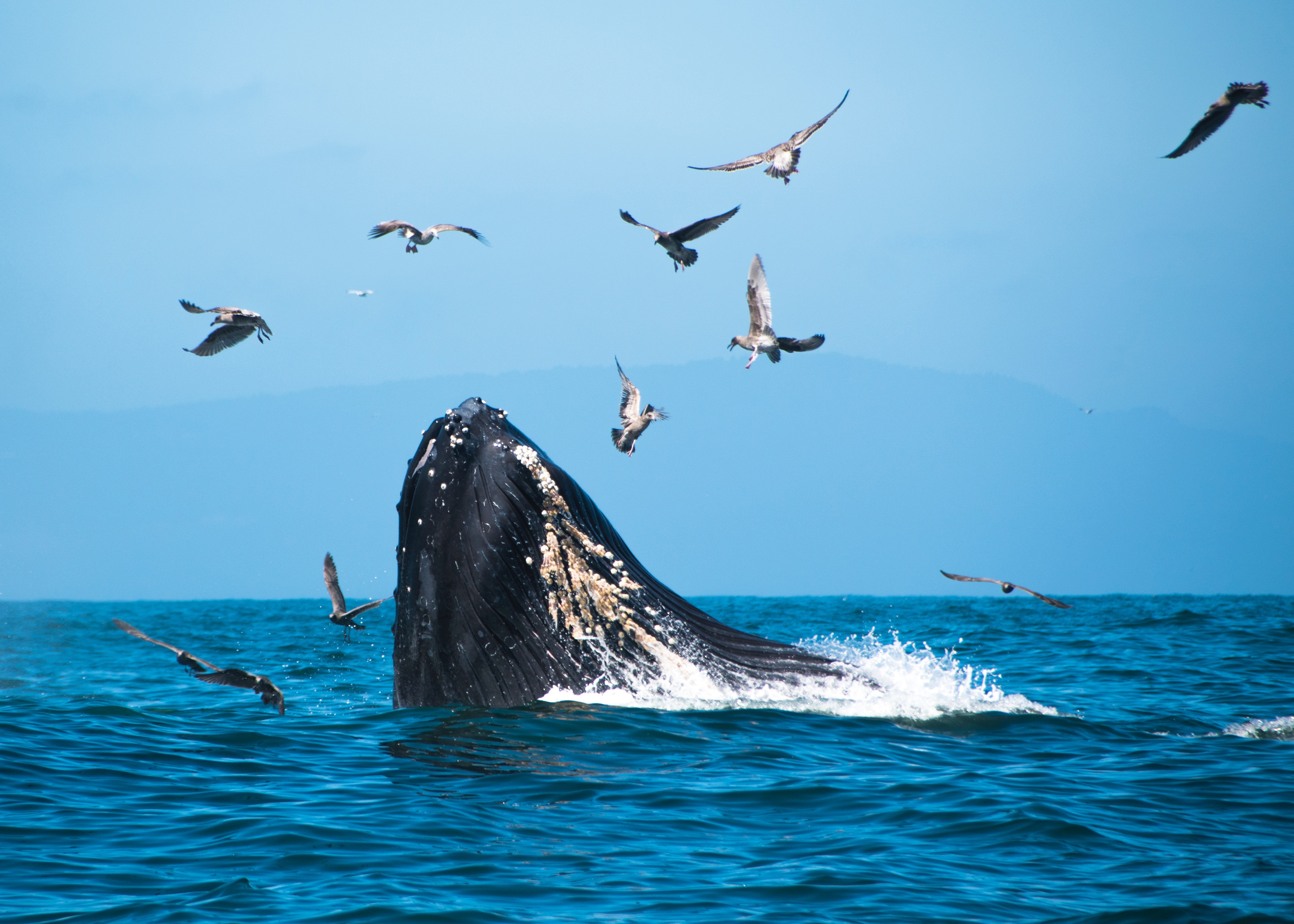
For the first time, scientists have linked climate change to krill levels and how this will affect whale populations across the Southern Hemisphere, including humpbacks, blue and minke whales. © Humberto Braojos

Archie's Pittwater Clean Up
My name is Archie Mandin
I am a Seabin Ambassador, I started this campaign because I want to take a stand against ocean plastics!
My goal is to raise enough money to bring a minimum of 20 Seabins to Pittwater NSW as I want to give The Northern Beaches the opportunity to reduce its plastic pollution impact on the ocean. Its amazing how much accidental rubbish comes down our creeks and into our waterways
I need your help to raise money to buy the Seabins a revolutionary ocean cleaning technology which is essentially a floating rubbish bin that operates 24/7 catching all floating debris in the water.
The Seabin helps clean the ocean of floating debris which in turn creates cleaner oceans and we all benefit from this in one way or another. I mean, who really wants to swim in pollution? Not me that’s for sure!
Did you know that 300 million tons of plastic are produced in the world every year, half of which is for single use products, from this more than 8 million tons of plastic is dumped into our oceans every year. We need to do something about it and now with the purchase of a Seabin we can all participate and make a difference!
Join me and my campaign to help ensure cleaner oceans!
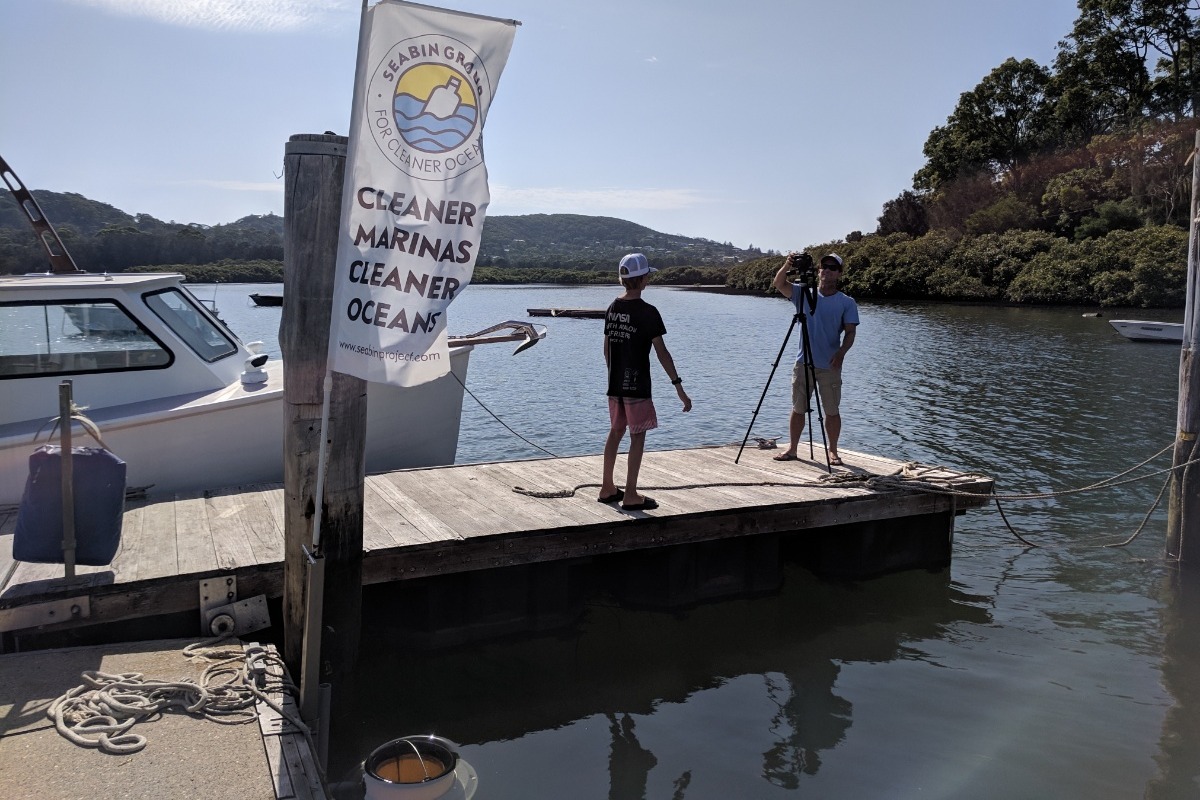
What’s a Seabin? The Seabin is a floating rubbish bin that is located in the water at marinas, docks, yacht clubs and commercial ports.
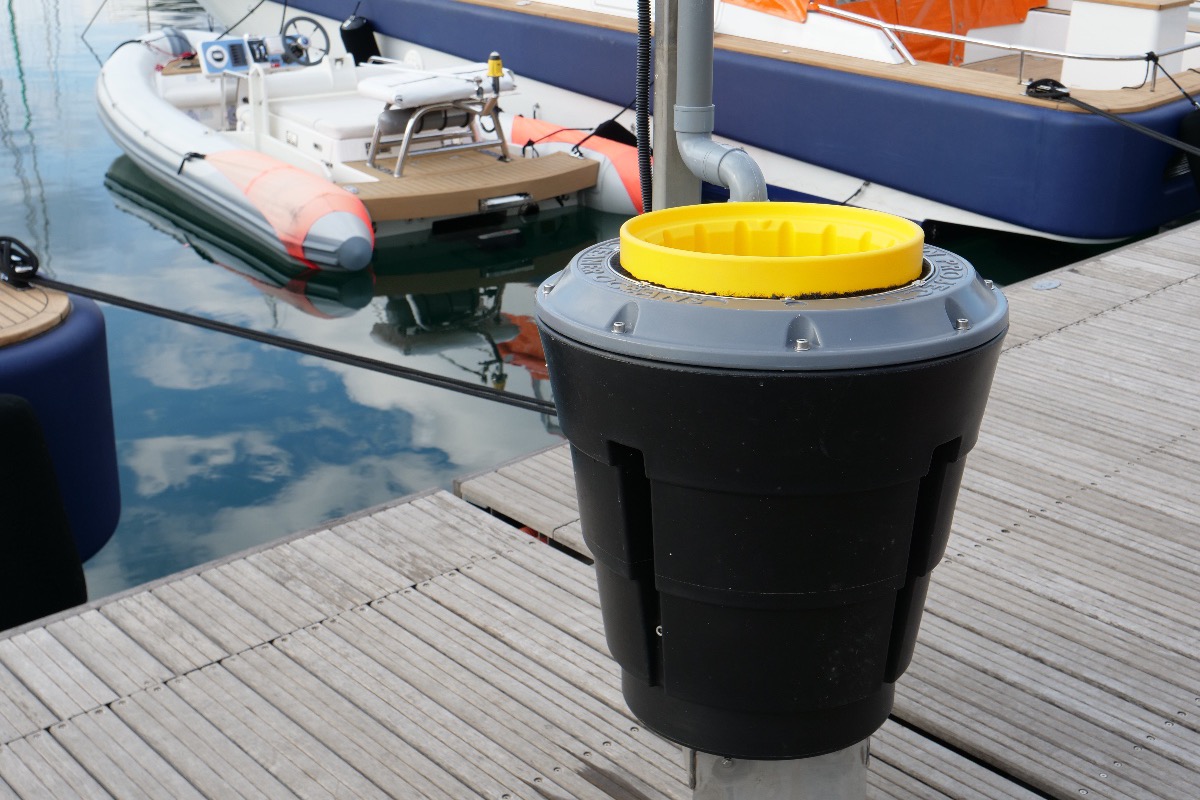
The Seabin can catch an average of 3.9kgs of floating debris per day which adds up to 1.4 tons per year. (depending on weather conditions and debris volumes) The Seabins is catching large plastic bags, bottles, plastic straws, coffee cups, food wrappers, surface oils and micro plastics down to 2 mm small.
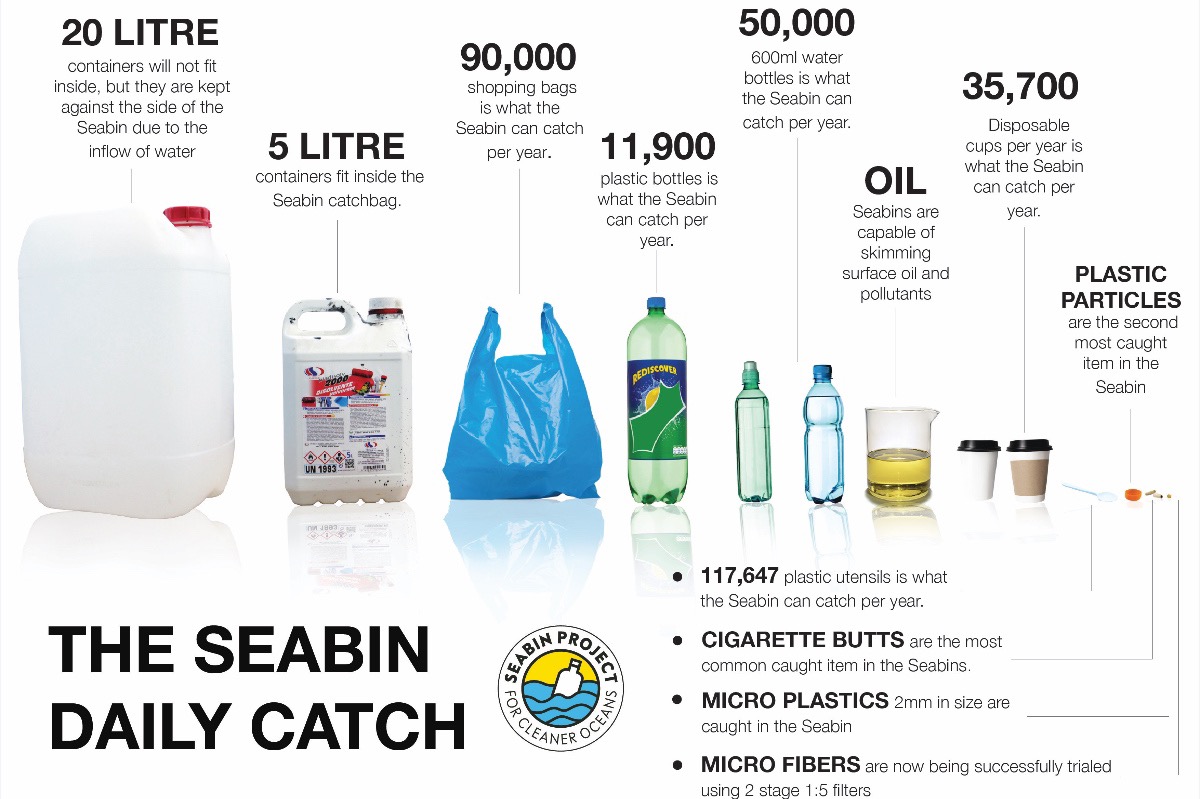
How can a Seabin contribute to cleaner oceans?The Seabin contributes to cleaner oceans by removing 1.4 tons of floating debris per unit per year. The location of the Seabin in marinas is ideal and where it matters most, close to the source of entry for floating debris. Ports and Marinas are perfect locations to stop floating debris from entering the open ocean and ocean plastics are also brought in by wind and currents.
Are the Seabins a danger to marine life?The fish According to the team at Seabin, stay away from the surface of the water where the Seabin sucks in the water. They are deterred by the force of the water current. If there are swarms of jellyfish or bait fish it is recommended that the Seabins are turned off until the swarms pass. If a fish was to accidentally go into the Seabin, it would be caught in the Seabin and stay submerged in water until the marina staff retrieve the filter and throw the fish still alive back into the water.
How does it work? Water is sucked in from the surface and passes through a catch bag inside the Seabin, with a submersible water pump capable of displacing 25.000 LPH (liters per hour). The water is then pumped back into the marina leaving litter and debris trapped in the catch bag to be disposed of properly.
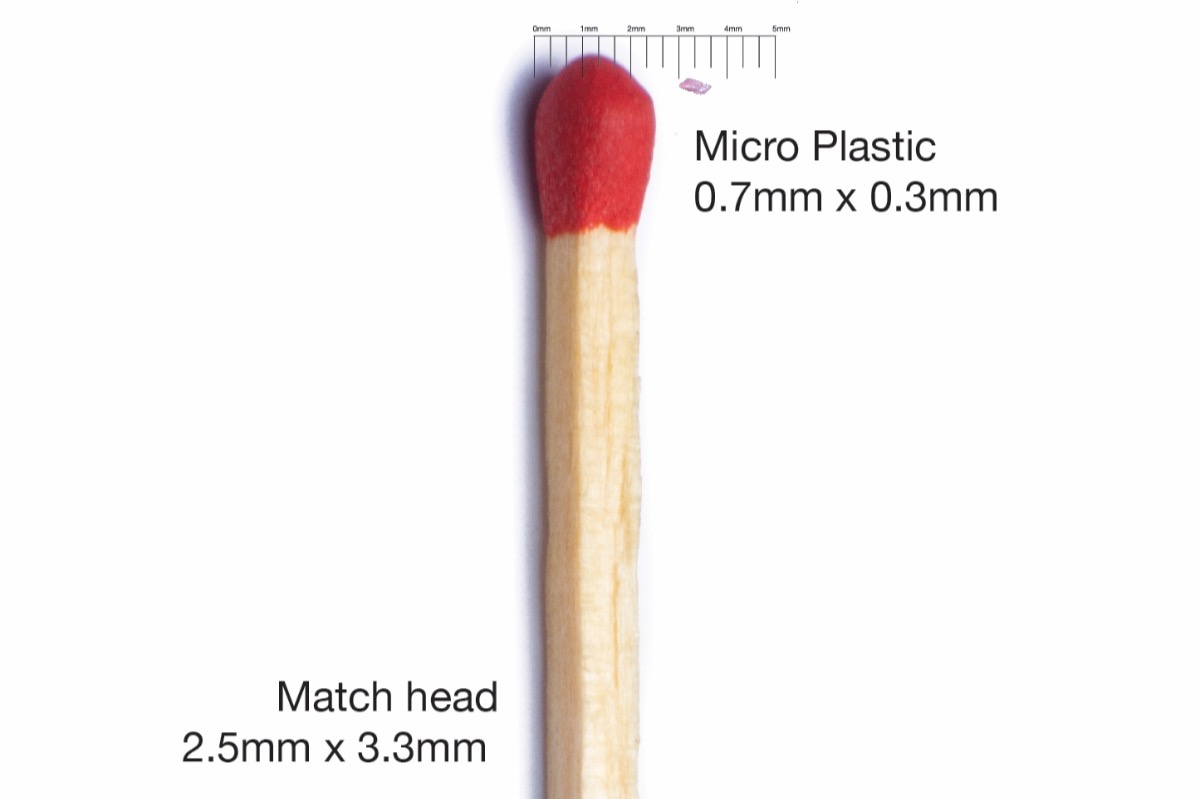
Who is responsible for the Seabin?This is the best part of it all, the marina will be the one responsible for the upkeep of the Seabins and also they will be paying for the energy consumption of the Seabin which is around $2 - $3 a day.
The marina enjoys a cleaner marina and the rest of us and the marine life enjoy cleaner oceans with less floating debris polluting our oceans!
Seabins part of a whole solutionSeabins whole solution is Technology, Education, Science, Research and Community. The reason for this is that Technology alone is not the solution to stopping ocean plastics, education is the real solution.

Great! Can our local community be involved also?Yes! The team at Seabin have interactive programs and lessons designed for schools, community and youth to interact with the Seabins and have over 2000 school students engaged around the world, this is something that we can do locally also with support from the team at Seabin Project.
What will we be doing if we participate in these programs?You would be joining an international community contributing important data and feedback on ocean plastics to the Seabin central data base. Renowned scientists, universities and environmental agencies are all a part of the programs also.
The lessons range from identifying ocean plastics to data collection of what the Seabins are catching weekly. The data collection is a very easy activity and where we can all see the measurable impact of debris the Seabins are taking out of the water in all weather conditions.
It’s as simple as counting how many plastic bags, plastic particles, food wrappers and then noting it down on a spreadsheet or app. Weather conditions and location information is also entered into the data base.
How can you help our campaign and make a difference in the world?Every contribution to this crowdfunding campaign helps, be it $1 or $50 dollars, it all adds up and bring us closer to our goal.
Even if you cannot afford a donation, please help by sharing this campaign with your friends and family on social media. The more people that know about the campaign the better!
Thanks everyone for taking the time to check out our campaign!
FOR CLEANER OCEANS!
Archie
FAQS SHEET
Seabin Project FAQs
Q: Can someone pay out the crowdfunding campaign goal?A: Yes! We need help! The more money we can raise, the more Seabins we can buy.
Q: Why crowdfund a Seabin?A: Until now, the Seabins were not for the everyday person to purchase because marinas ports and yacht clubs are the target market for Seabin Group. This is a way where everyday people can give something back to the oceans.
Q: How do Seabins work in tidal areas?A: Seabins at present are designed for floating docks and pontoons. The Seabins move up and down with the tide on the floating dock.
Q. How are the pumps run? A. The pumps are currently electric, and around $2-$3 a day to run.
Q: When are the Seabins available?A: Depending on your countries location, Seabins will be available Feb 2019.
Q: Do any fish get sucked into the Seabins? What about smaller marine life?A: There is a possibility of fish to enter the Seabins, however in the last 2 years of development, the Seabins have only caught a handful of small bait fish. Most of which have been thrown back into the water alive. The fish simply stay away from the flow of water entering the Seabin and with the current fine tuning of the Seabin, the risk is now minimal.
Q: I don’t have any money to donate, how can I help?A: Don’t worry! Your amazing anyways and thanks for even contacting us. We need help to share this project around with any media we can. Social media platforms like Facebook, Instagram, Twitter, websites, bloggers. Also with newspapers, magazines, tv, radio and journalists. Also friends and family!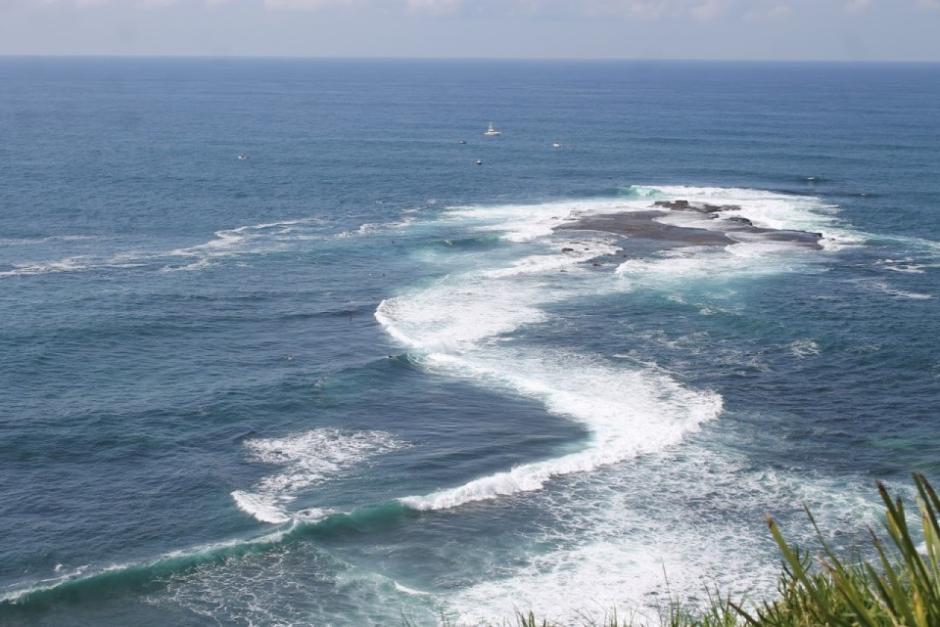
 Crosswaves - Newport Reef
Crosswaves - Newport Reef





FAQS SHEET
Seabin Project FAQs


New Microfluidics Device Can Detect Cancer Cells In Blood
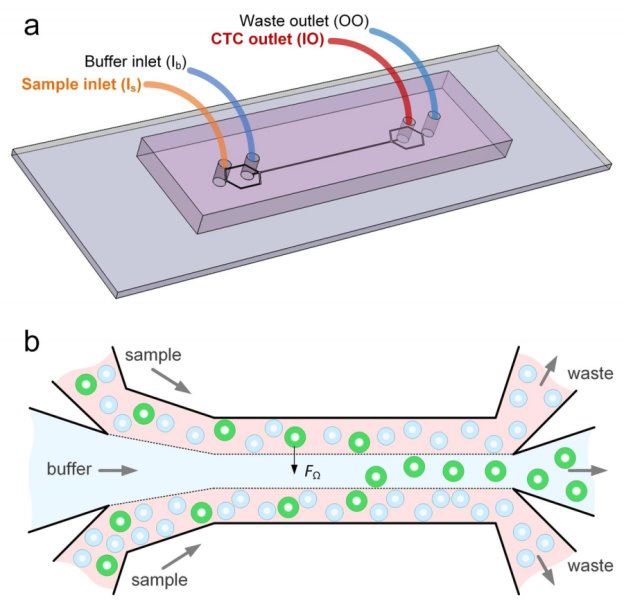
Improved Treatment After Pregnancy Complicated By High Blood Pressure: World-First Study Launched
THC Found More Important For Therapeutic Effects In Cannabis Than Originally Thought
Death Rates In People On The Autism Spectrum Twice Those Of The General Population: New Research
Boost For Australian Grain Industry
Ancient Rocks Provide Clues To Earth's Early History
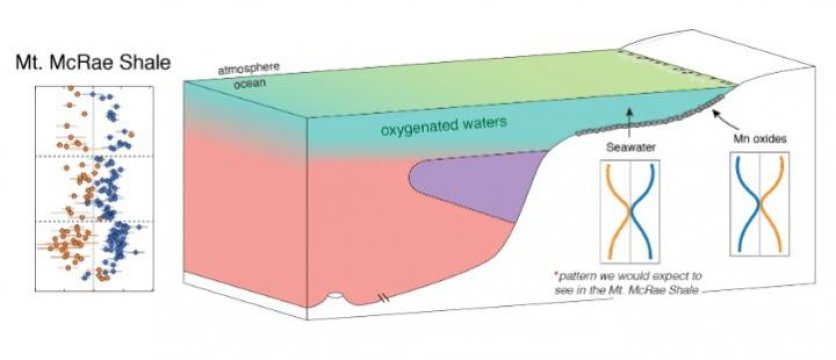
Disclaimer: These articles are not intended to provide medical advice, diagnosis or treatment. Views expressed here do not necessarily reflect those of Pittwater Online News or its staff.